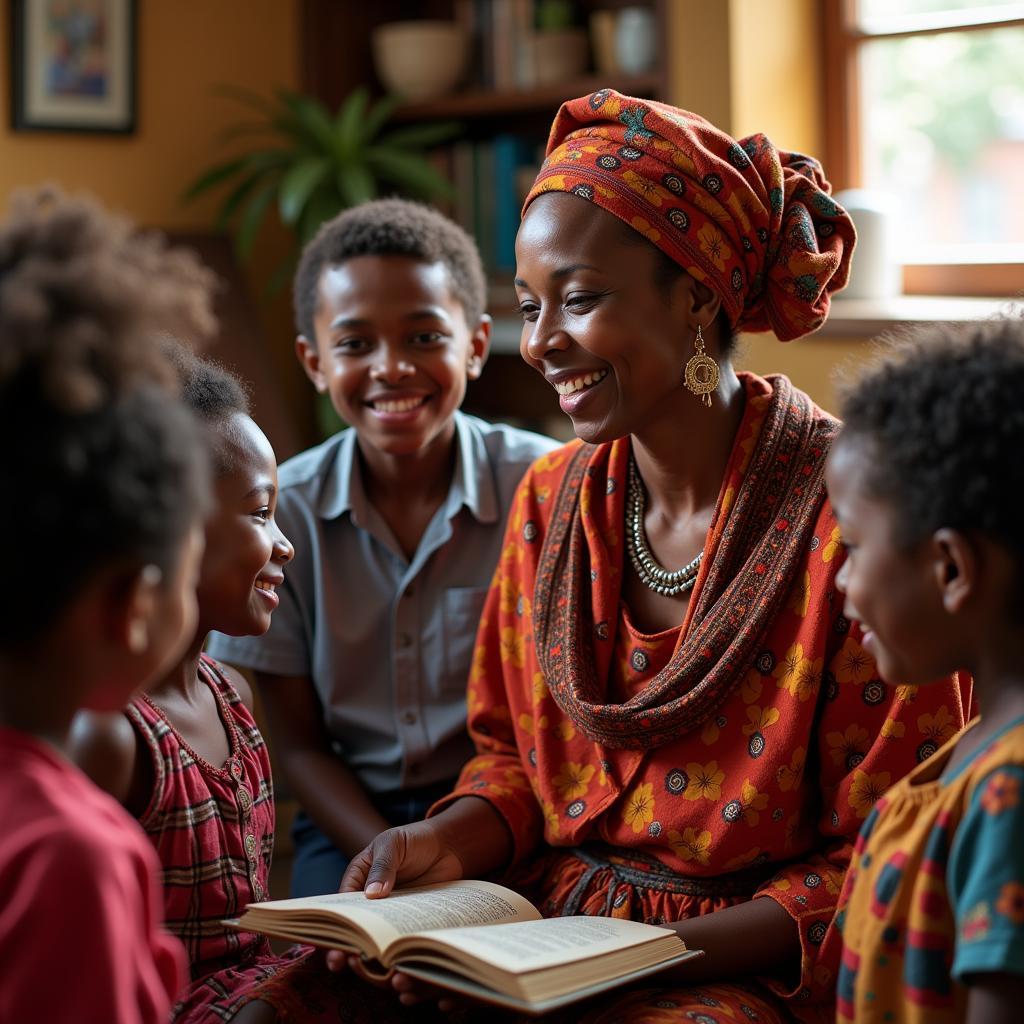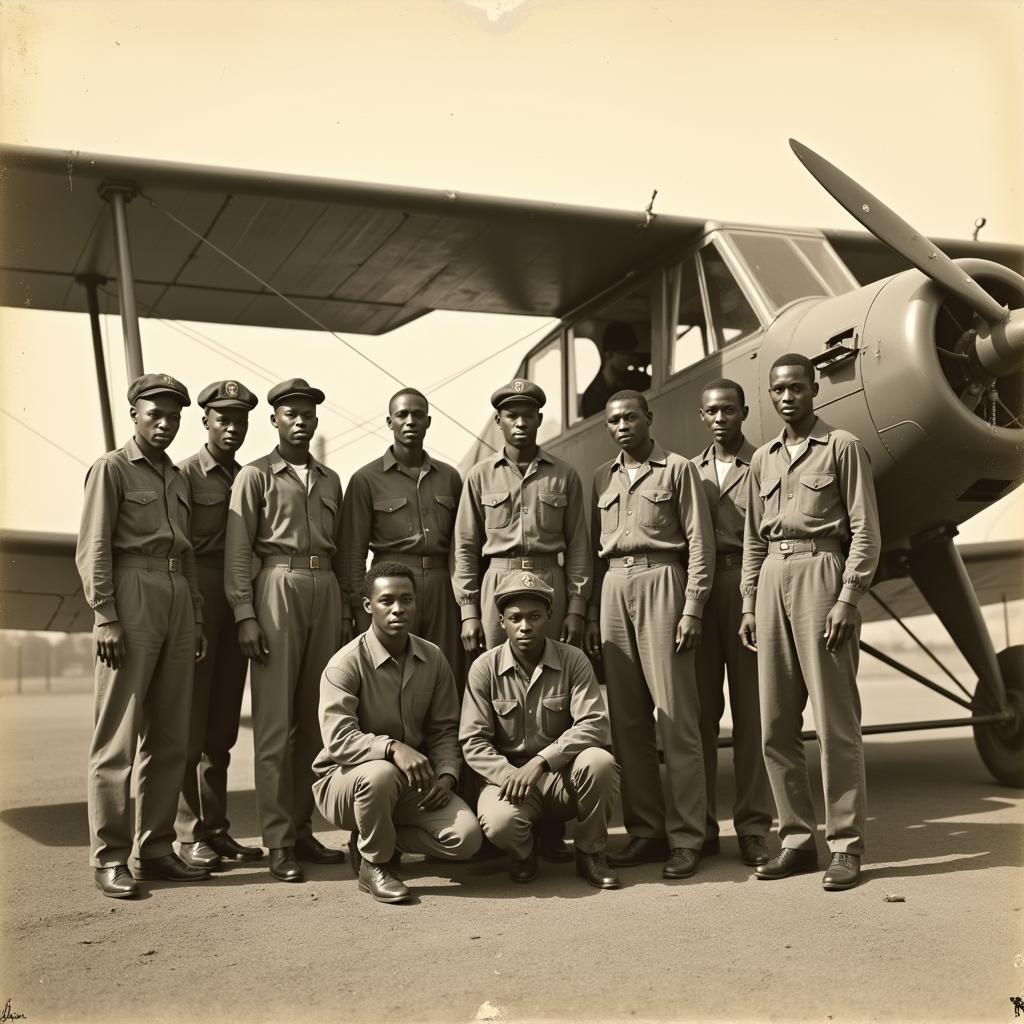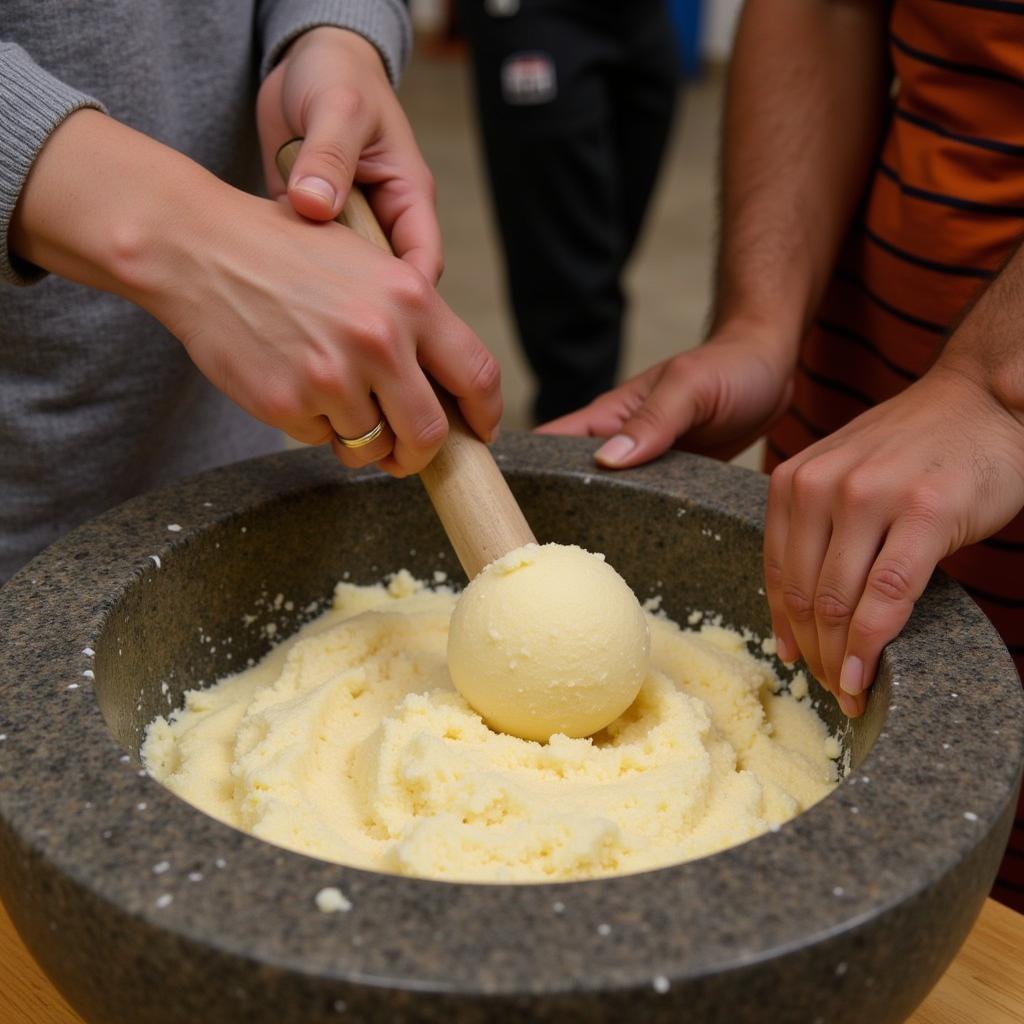Exploring the Art of African Head Sculpture
African Head Sculpture, a captivating form of artistic expression, holds deep cultural and historical significance across the diverse continent of Africa. From ancient Nok terracotta heads to contemporary wooden masks, these sculptures offer a glimpse into the rich traditions, beliefs, and artistic ingenuity of various African communities. This article delves into the fascinating world of African head sculpture, exploring its diverse forms, materials, symbolism, and enduring legacy.
African head sculptures are more than just aesthetic objects; they embody the spirit, values, and history of the people who created them. They serve as a powerful medium for storytelling, preserving ancestral knowledge, and connecting with the spiritual realm. The diversity of styles and materials reflects the vastness and richness of the continent’s artistic heritage. After exploring this introduction, you may find our article on African good luck symbols interesting. african good luck symbols
The Diversity of African Head Sculptures
African head sculptures vary significantly in style, size, and material, reflecting the unique traditions and artistic sensibilities of different regions and ethnic groups. From the elongated forms of the Ife heads to the abstract masks of the Dan people, each sculpture tells a unique story. Materials used range from wood, bronze, and terracotta to ivory, stone, and even beads.
Nok Terracotta Heads: Ancient Masterpieces
The Nok culture, which flourished in present-day Nigeria from around 1000 BC to 500 AD, is renowned for its remarkable terracotta sculptures, particularly the iconic head figures. These sculptures, often characterized by their large eyes, stylized features, and elaborate hairstyles, showcase the sophisticated artistic skills of the Nok people.
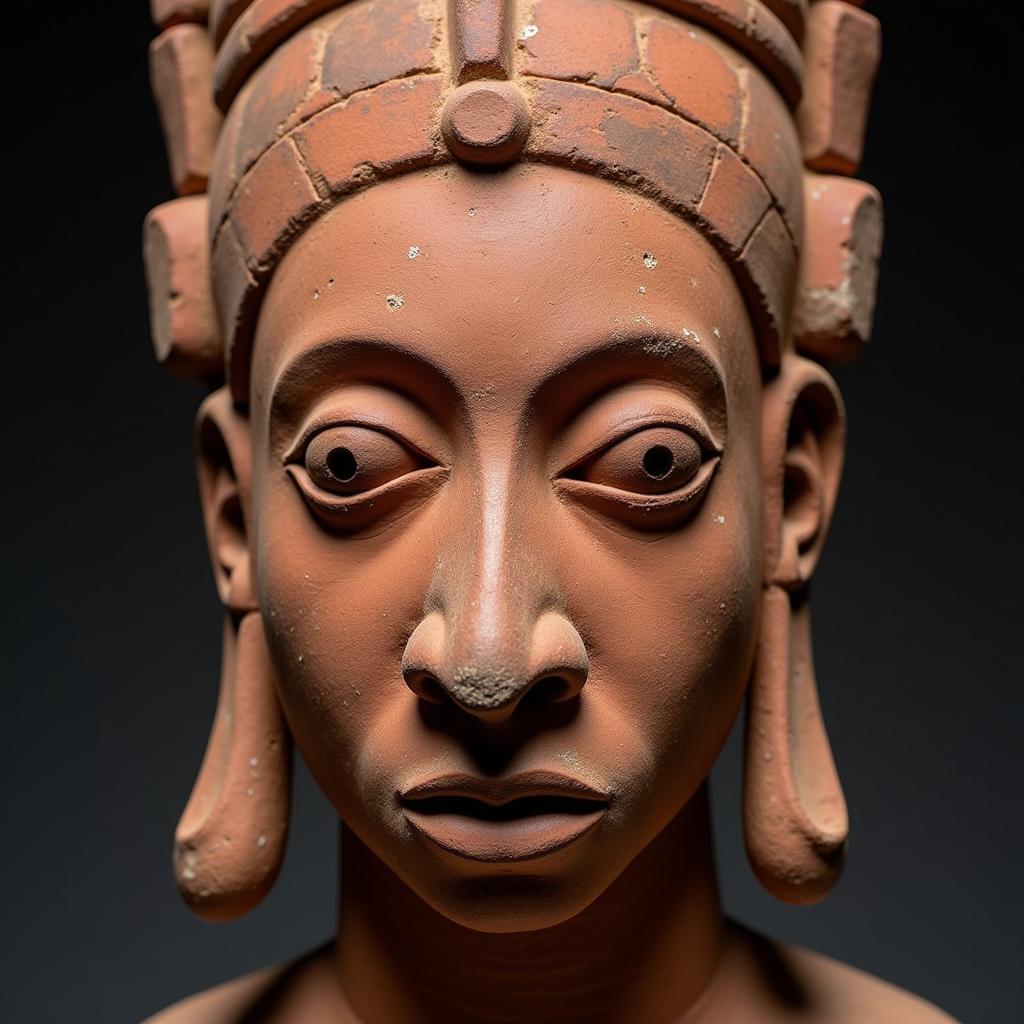 Ancient Nok Terracotta Head Sculpture from Nigeria
Ancient Nok Terracotta Head Sculpture from Nigeria
Ife Heads: Portraits of Royalty
The Ife people of southwestern Nigeria are celebrated for their naturalistic bronze and terracotta heads, often believed to represent kings and deities. These sculptures, dating back to the 12th-14th centuries, display a remarkable level of realism and technical mastery, capturing the individual features and expressions of their subjects.
Masks: Embodying Spirits and Ancestors
Masks play a crucial role in many African cultures, representing spirits, ancestors, or deities during rituals, ceremonies, and performances. They are often carved from wood and adorned with intricate details, such as feathers, beads, and shells. The masks are not merely representations but are believed to embody the spirits they depict.
Symbolism and Meaning in African Head Sculpture
African head sculptures are imbued with profound symbolism, often reflecting cultural beliefs, social values, and spiritual concepts. For example, a large head might symbolize wisdom and leadership, while elaborate hairstyles might denote social status or spiritual power. Scarification marks might indicate lineage or membership in a particular group. The symbolism is complex and often varies depending on the specific culture and context.
Dr. Abimbola Adisa, a renowned anthropologist specializing in Yoruba art, explains, “African head sculptures are not simply objects of art; they are vessels of cultural memory and spiritual power. They connect the living with their ancestors and embody the values and beliefs that shape African societies.”
Hairstyles and Headdresses: Markers of Identity
Hairstyles and headdresses in African head sculptures often carry symbolic meaning, indicating social status, age, gender, or spiritual affiliation. Intricate braids, elaborate coiffures, and symbolic adornments can communicate a wealth of information about the individual or deity represented.
Scarification and Body Markings: Symbols of Belonging
Scarification marks and other body markings depicted on African head sculptures can signify lineage, clan membership, or achievements. These markings are not merely decorative but are integral to the individual’s identity and social standing within the community.
The Enduring Legacy of African Head Sculpture
African head sculpture continues to inspire artists and captivate audiences worldwide. Its influence can be seen in various art forms, from modern sculpture and painting to fashion and design. Museums and galleries around the world showcase these remarkable works, preserving and celebrating the rich artistic heritage of Africa. If you are searching for an African boutique store near me, you might find sculptures and other art forms there. [african boutique store near me](https://omenkamag.com/african-boutique-store-near me/)
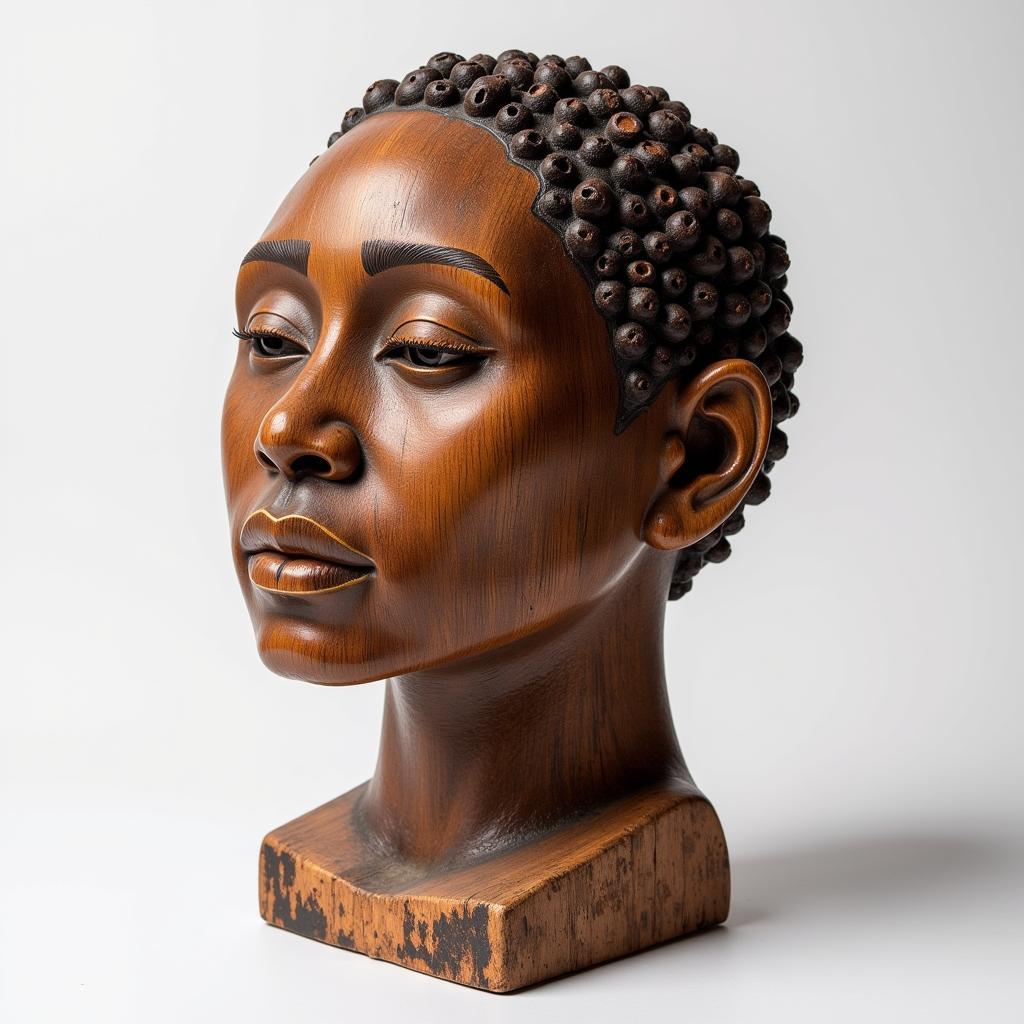 Contemporary African Head Sculpture: A Modern Interpretation of Tradition
Contemporary African Head Sculpture: A Modern Interpretation of Tradition
Professor Chinua Okonkwo, a leading expert on African art history, notes, “African head sculpture stands as a testament to the enduring power of artistic expression. These sculptures not only reflect the rich cultural heritage of Africa but also continue to inspire and challenge artistic conventions around the world.”
African head sculpture offers a profound glimpse into the diverse cultures and artistic traditions of the African continent. These sculptures are not merely objects of beauty but powerful symbols of identity, spirituality, and history. They continue to resonate with audiences worldwide, inspiring artists and enriching our understanding of African art and culture.
FAQ
-
What materials are commonly used in African head sculptures?
Materials include wood, bronze, terracotta, ivory, stone, and beads. -
What is the significance of hairstyles in African head sculpture?
Hairstyles often symbolize social status, age, gender, or spiritual affiliation. -
What do scarification marks on African head sculptures represent?
Scarification marks can signify lineage, clan membership, or achievements.
Further Exploration
Interested in learning more? Explore our articles on african girls silhouette and african elephant sketch.
Contact us for any assistance. Phone: +255768904061, Email: [email protected] or visit us at Mbarali DC Mawindi, Kangaga, Tanzania. We offer 24/7 customer support.
